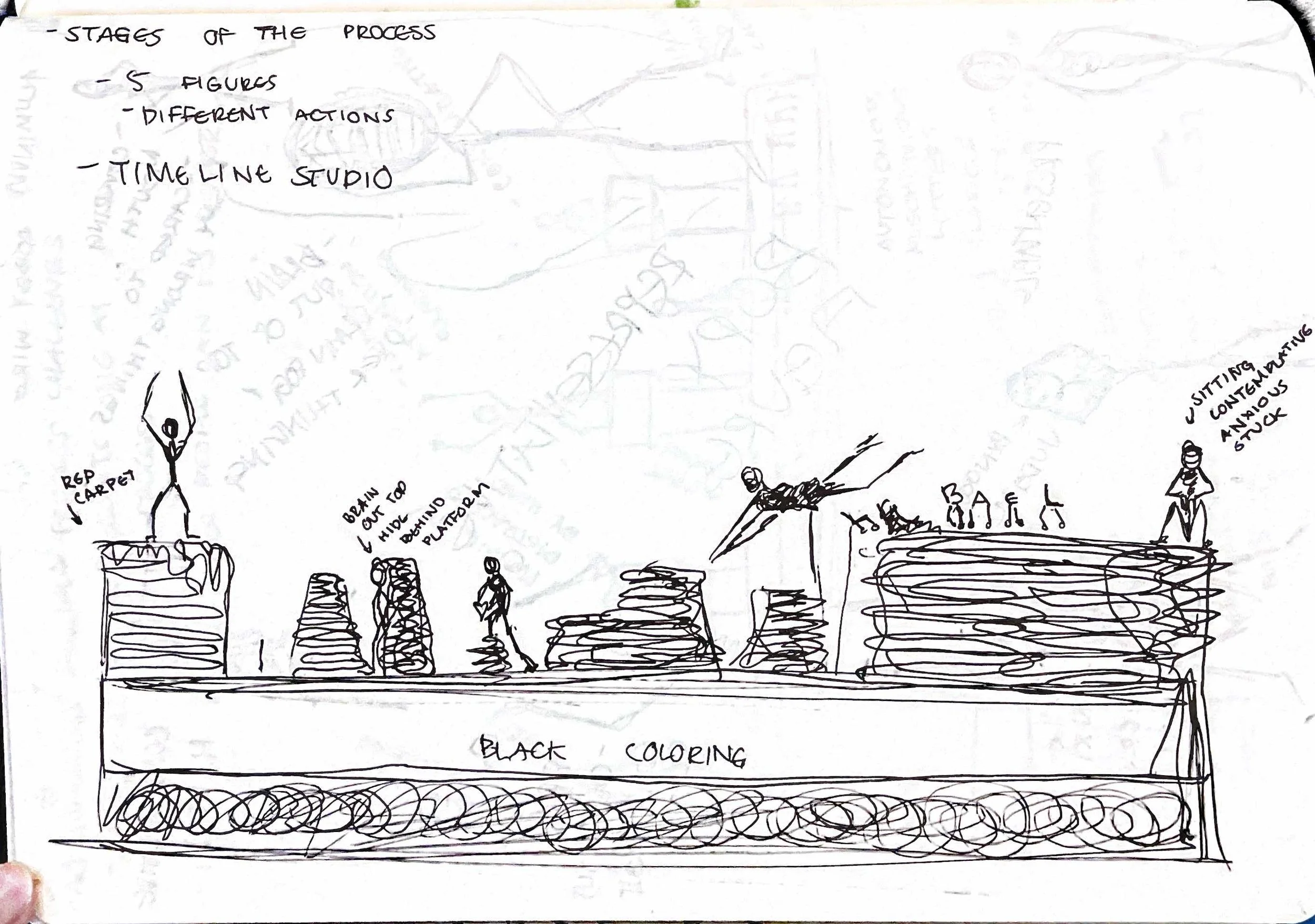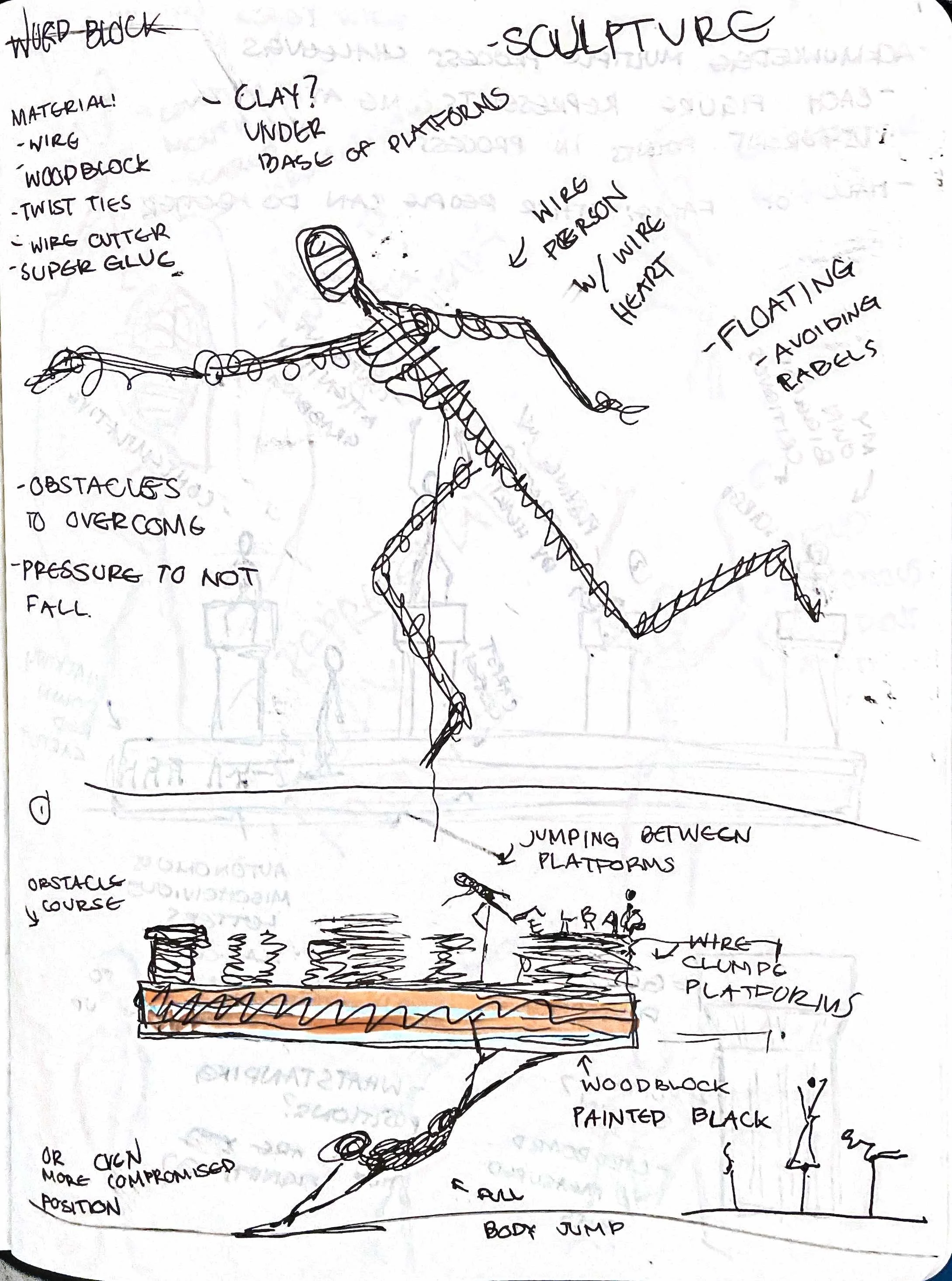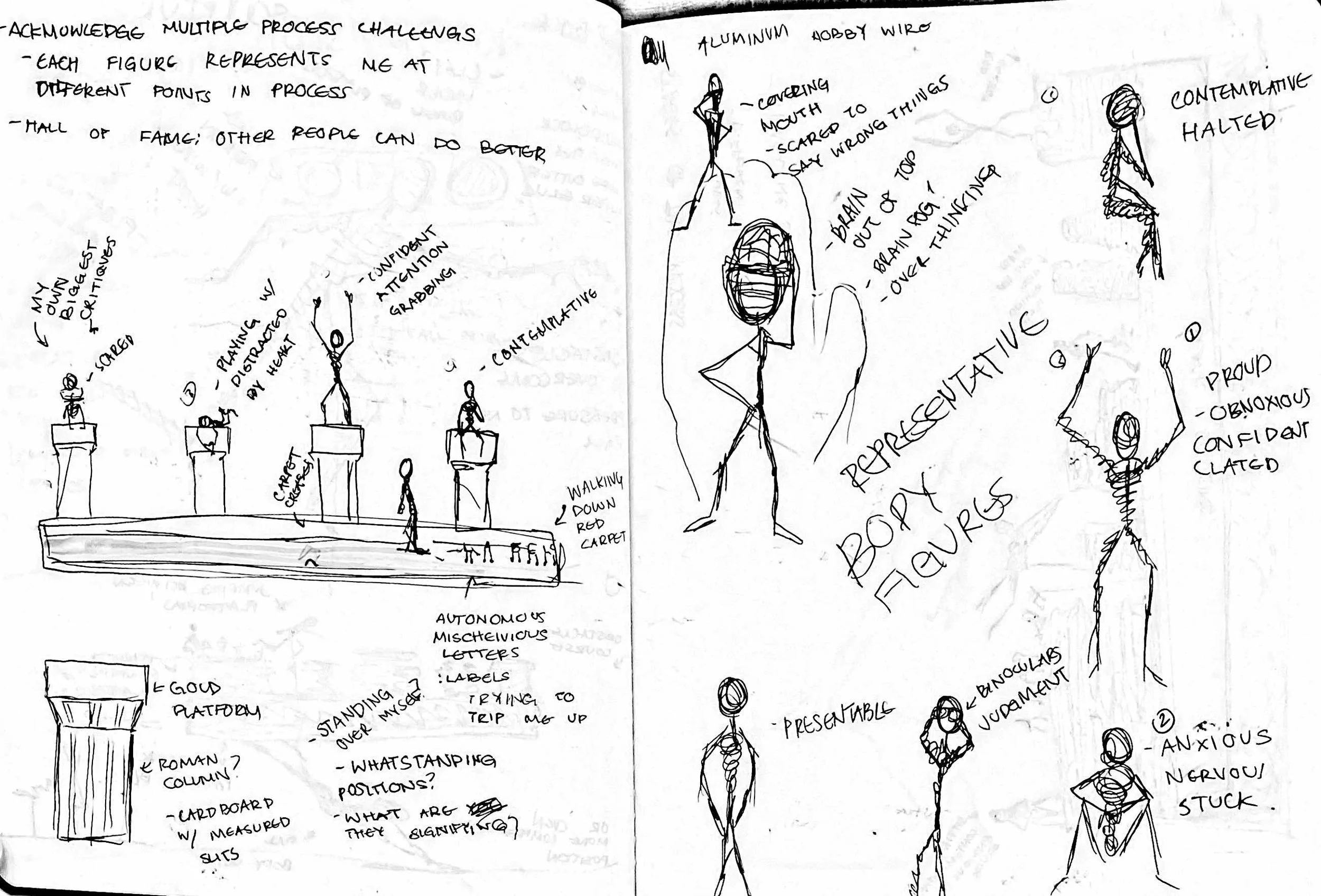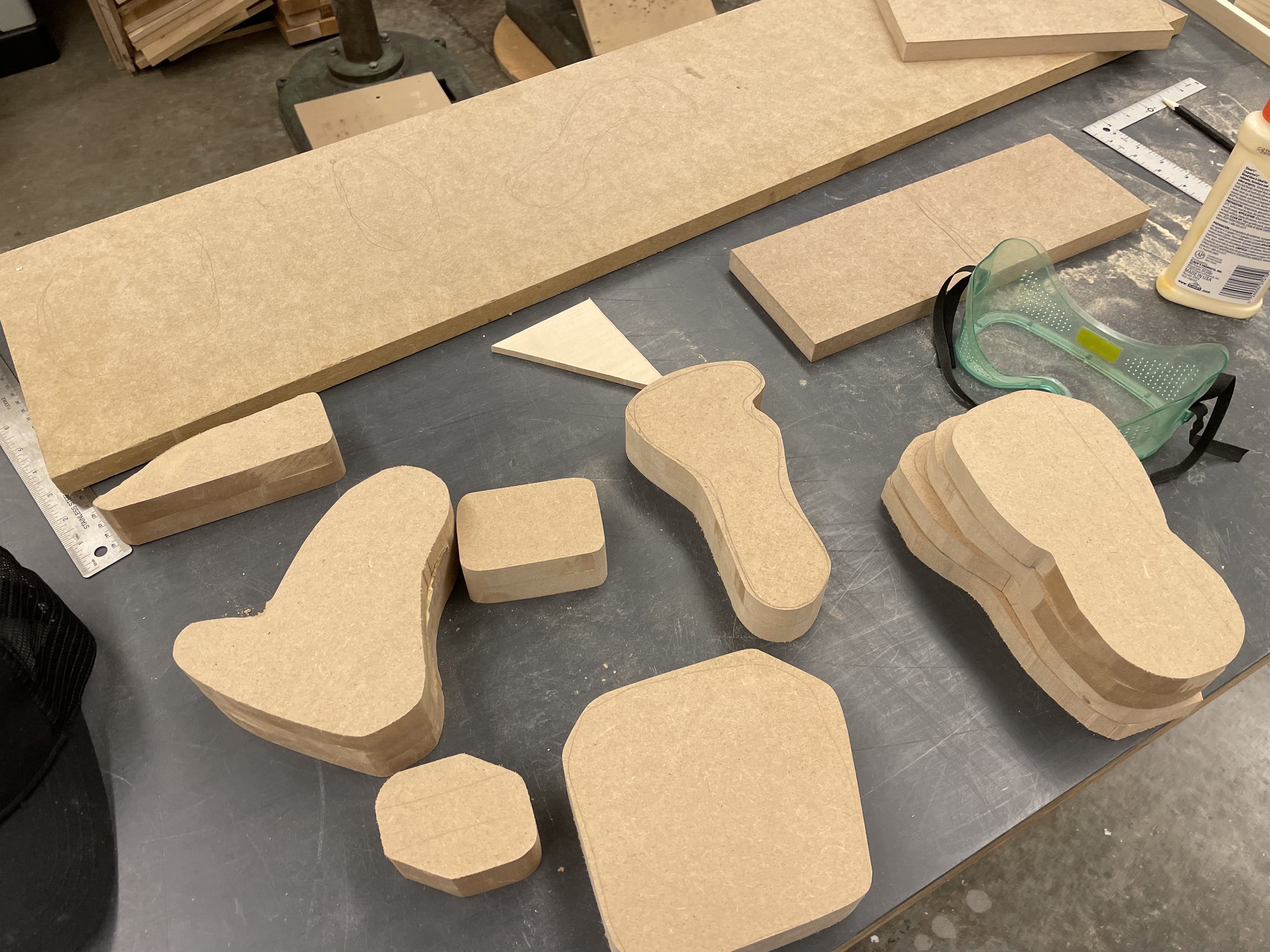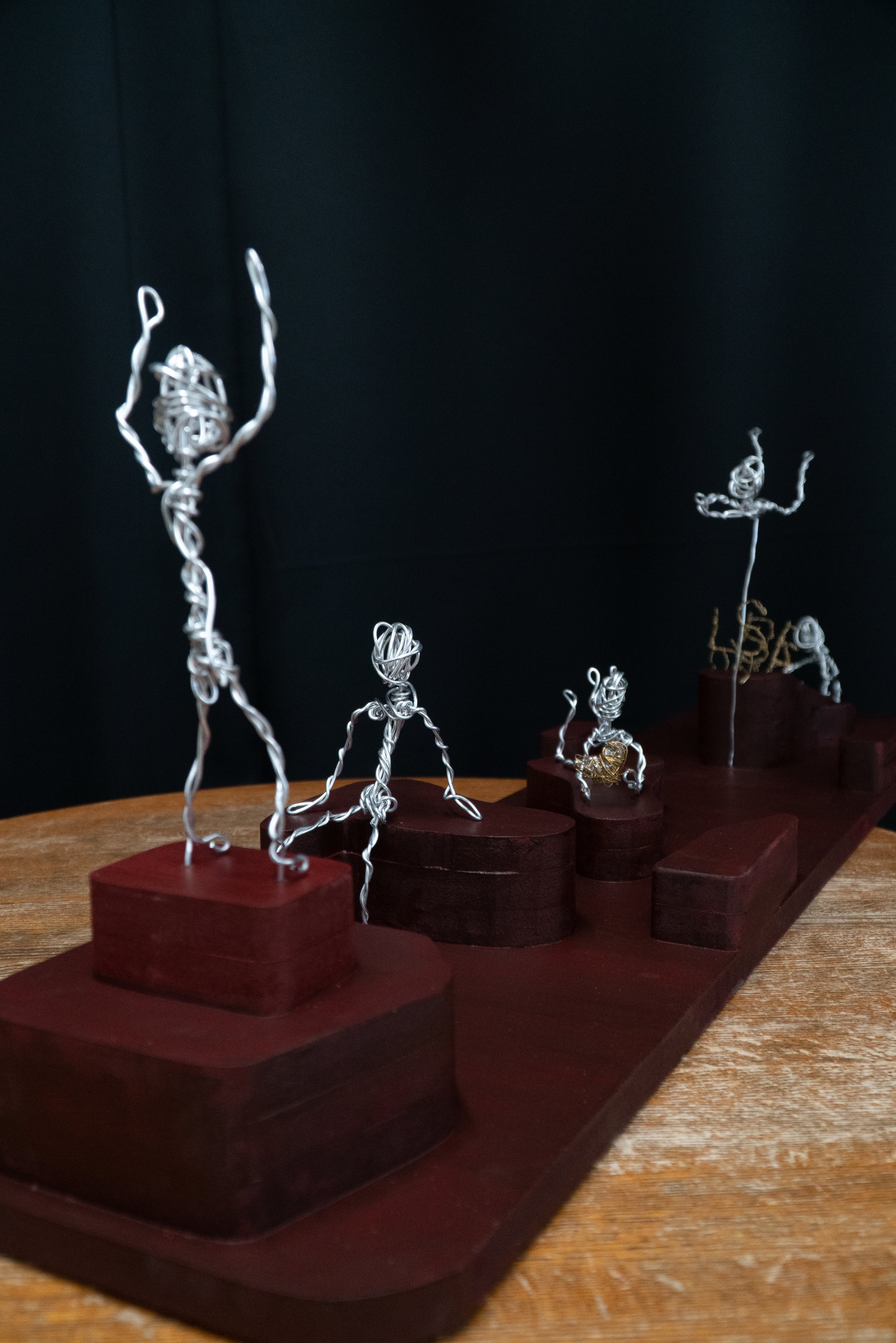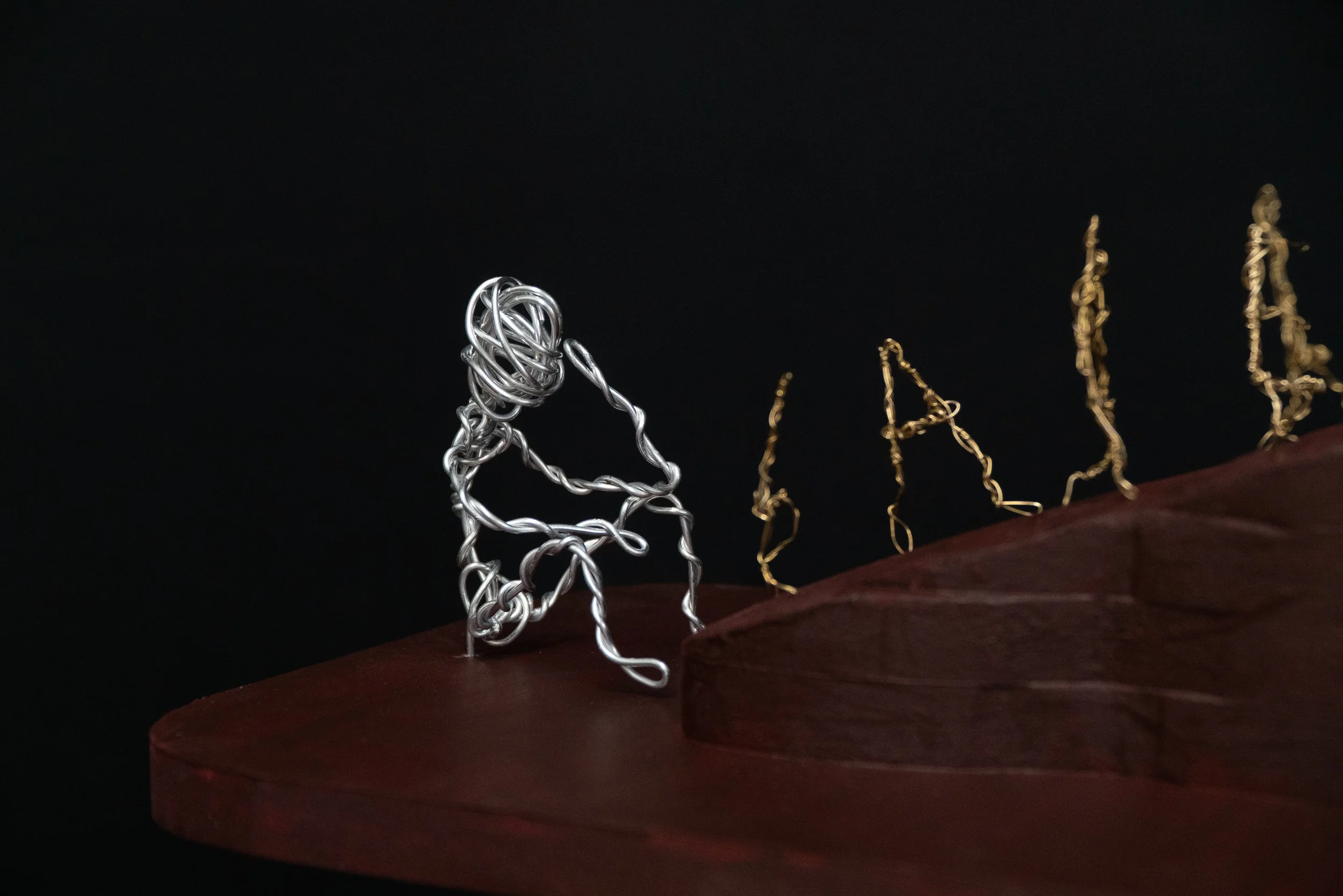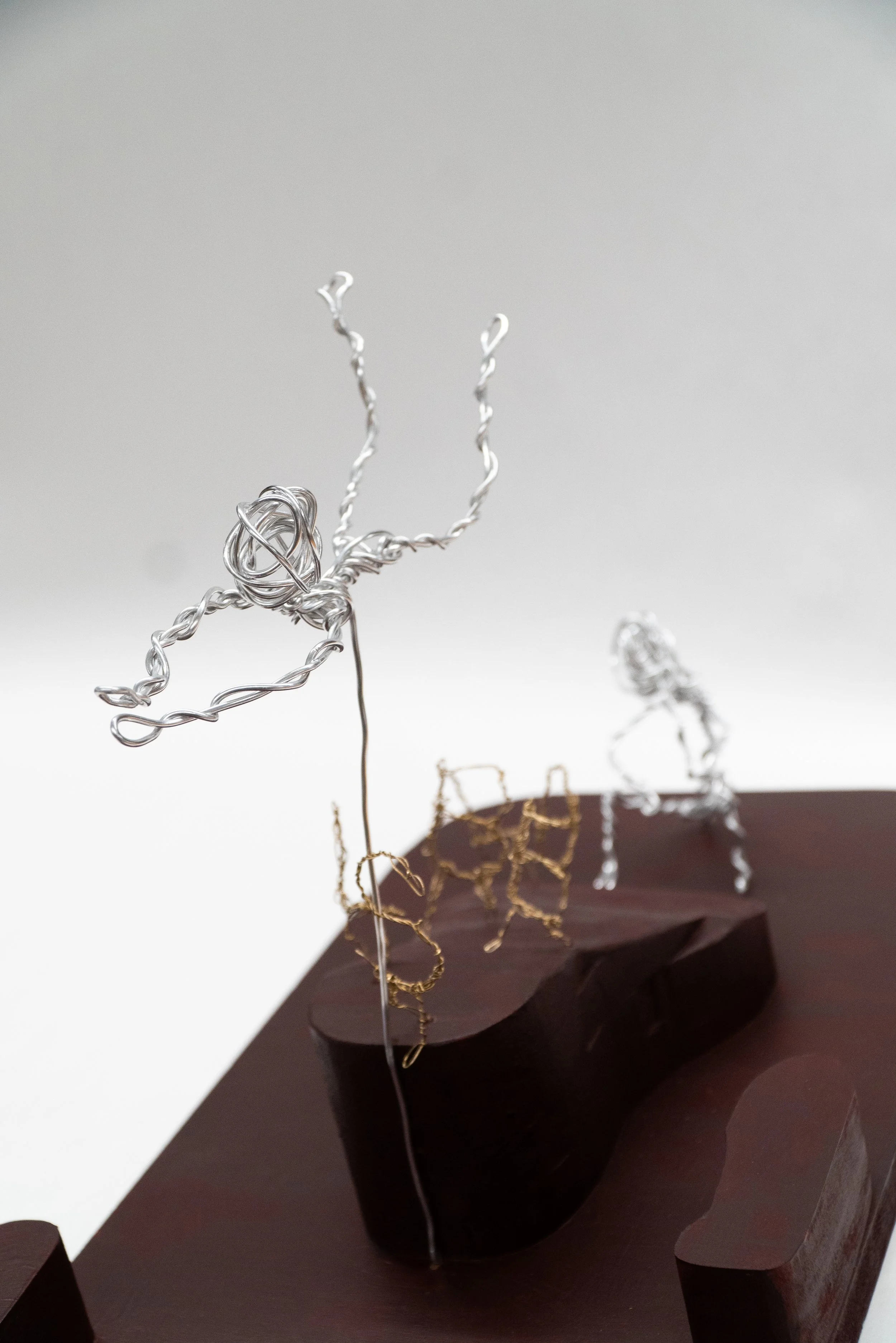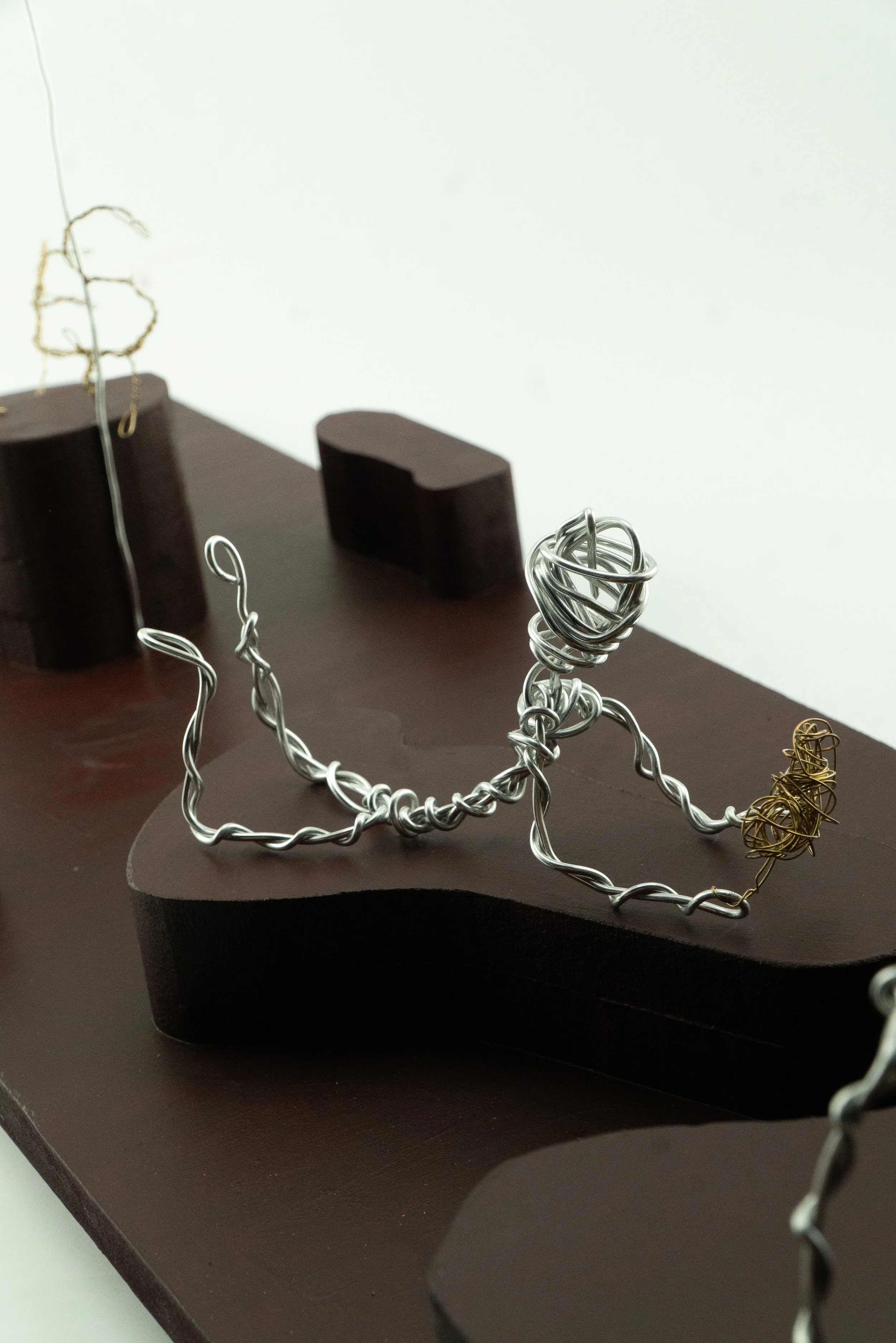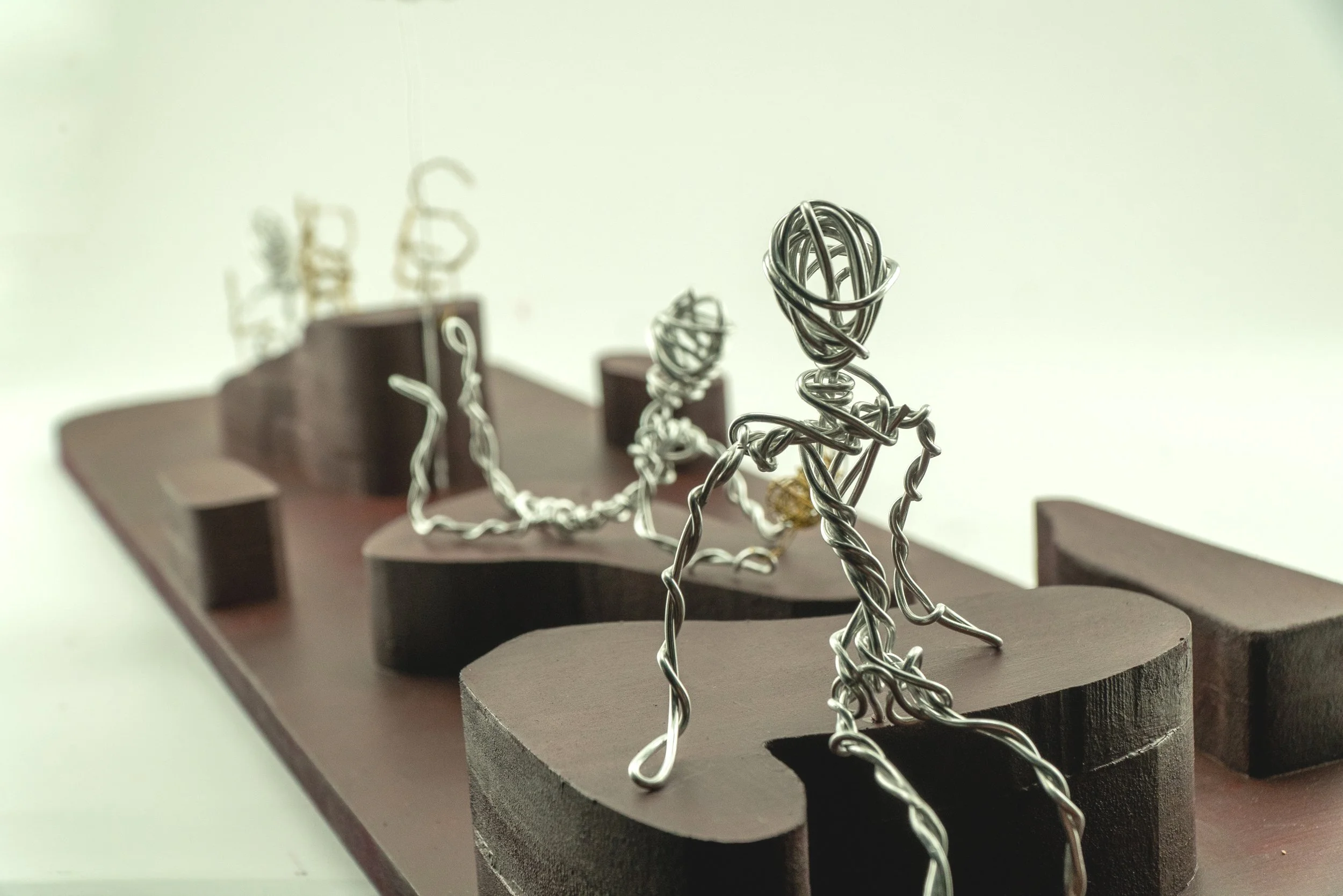The Process Project
The Process Project is a project created through reflecting on the process in which I go through each time I create a piece of art. Somewhat self-explanatory, I know, ha! For the research aspect of the project - I inquired about different methods people use to solve issues, and the emotional patterns that people often fall into when completing tedious or long tasks & projects.
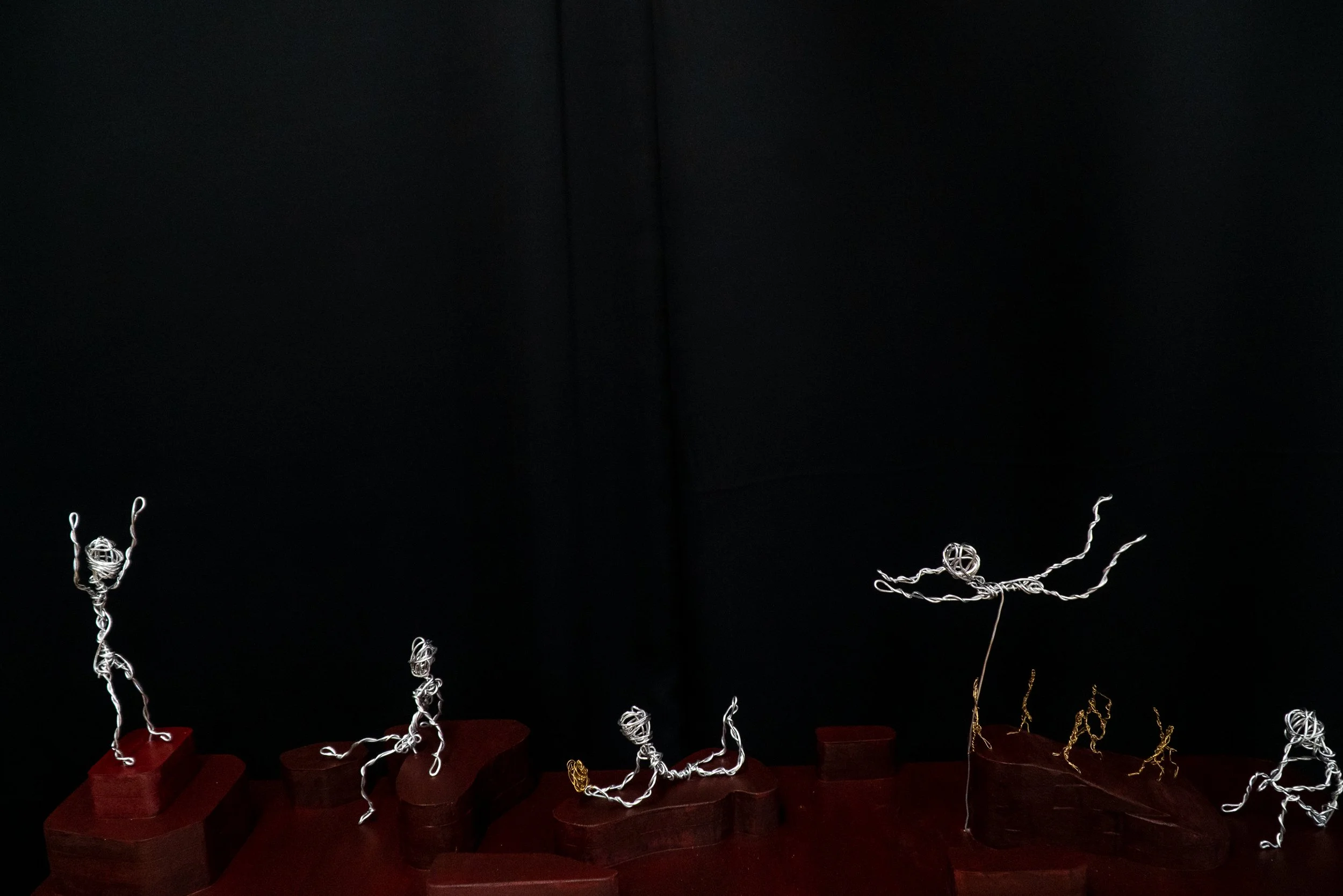
Step 1 - Anxious & Contemplative
I created the first figure in a deeply pensive pose. The figure is slouched forward in a sitting position with their hand on their head. I was able to achieve an expressive posture with the malleable wire.
For myself, and I assume for most, starting a project is consistently one of the hardest parts. It is seemingly the stage where you ‘have to’ decide what you want to make and express, and how you’re going to do it. There are so many ways to make things, and so many topics to explore - the possibility of all the options can be paralyzing initially.
Many individuals commonly find a plethora of choices to be more difficult to deal with than picking between a few. More choices require more thought and effort. (Psychology of Choice)
Step 2 - Diving In
The second figure is created levitating, with his feet above his head. The positioning is intended to imply the figure was running and jumped from the sloped form behind it. The letters L-A-B-E-L-S are formed in gold wire to be chasing the figure.
The second stage in my creative process is certainly ‘diving in head first’. I find myself needing to start the project and begin some sort of task. This could look like excessive sketching, modeling, or cold production of the final piece. This stage comes after contemplation, but I do not like to label the piece or what every aspect means. I find that the piece evolves and changes overtime.
This part of the process involves grit. Grit is a psychological trait that I have been researching recently in depth, as it answers the question of why 2 people of the same intelligence might accomplish different things. Grit is incredibly important and may act as a behavior standard for all aspects of your life.
Step 3 - Distracted
This figure is on a block perfectly formed for its position and perspective. The figure is holding a heart formed from gold wire in their hands, lying on the ground, facing directly towards the heart,
This is the stage of my process where my focus wavers. I am still in ‘go mode’ and completing tasks, but I find myself focusing on my feelings about a certain thing, whether it be conceptual or tactile, and losing sight of the of practicality or how effectively I am expressing my concept in the piece. I get distracting by the “heart” behind the piece.
Grit may need time to recharge. There are many terms that come into play when researching grit - for example: Motivation, discipline, and grit are all distinguishable from one another and each involve different learning skills. You cannot rely on motivation or discipline alone for great work, you need to employ a combination.
Step 4 - Kicking Back
This figure is sitting on a more elevated platform, looking forward. This change in elevation is intended to signify a change in perspective. It is a time where I try to think about how people can relate to, or interact with the ideas I am trying to express.
The fourth stage of my creative process involves me taking a step back from my work. In the previous stages I am so invested in completing tasks, and I develop some narrative in my head, but this step of the process is one where I reflect on how others may view my work or if it continues to make sense when I stick my head up for air, or view it from a different perspective.
A pause for reflection is incredibly important in the development of a project - especially one with invested emotional energy. Grit may allow you to continue with task and chore, but reflection will aid your learning.
Step 5 - Confident, Done
The final figure of this 5pt set is standing tall with their arms up in the air. The figure is on a platform resembling a podium and looking forward away from the previous stages.
The final stage of my creative process is pride. I have struggled with finding it difficult to feel satisfied, but with much of the work that I am proud I am able to reach a point where I can put my tools down.
Most students commonly report feeling pride or anxiety after submitting or completing an assignment. Completing a task is an incredibly rewarding experience for the average human being. Humans love the illusion of progress, so dopamine floods an individuals mind upon the perceived completion of a task.
Núñez, José C., et al. “How Do Student Prior Achievement and Homework Behaviors Relate to Perceived Parental Involvement in Homework?” Frontiers, Frontiers, 3 July 2017, www.frontiersin.org/articles/10.3389/fpsyg.2017.01217/full.
